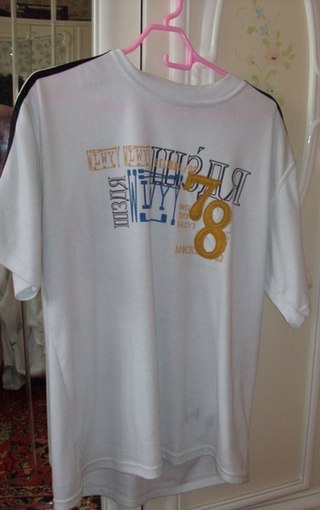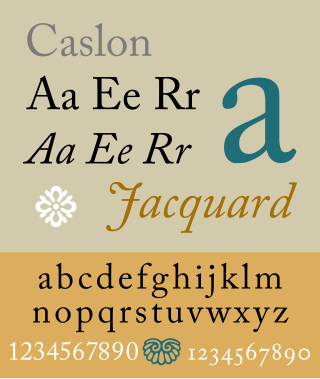A, or a, is the first letter and the first vowel of the Latin alphabet, used in the modern English alphabet, the alphabets of other western European languages and others worldwide. Its name in English is a, plural aes. It is similar in shape to the Ancient Greek letter Alpha, from which it derives. The uppercase version consists of the two slanting sides of a triangle, crossed in the middle by a horizontal bar. The lowercase version can be written in two forms: the double-storey a and single-storey ɑ. The latter is commonly used in handwriting and fonts based on it, especially fonts intended to be read by children, and is also found in italic type.
R, or r, is the 18th letter of the Latin alphabet, used in the modern English alphabet, the alphabets of other western European languages and others worldwide. Its name in English is ar, plural ars, or in Ireland or. In some varieties of African-American Vernacular English, the name of the letter is pronounced as "arruh".
Transliteration is a type of conversion of a text from one script to another that involves swapping letters in predictable ways, such as Greek ⟨α⟩ → ⟨a⟩, Cyrillic ⟨д⟩ → ⟨d⟩, Greek ⟨χ⟩ → the digraph ⟨ch⟩, Armenian ⟨ն⟩ → ⟨n⟩ or Latin ⟨æ⟩ → ⟨ae⟩.
A cedilla, or cedille, is a hook or tail added under certain letters as a diacritical mark to modify their pronunciation. In Catalan, French, and Portuguese it is used only under the letter c, and the entire letter is called, respectively, c trencada, c cédille, and c cedilhado. It is used to mark vowel nasalization in many languages of sub-Saharan Africa, including Vute from Cameroon.
A caron is a diacritic mark (◌̌) commonly placed over certain letters in the orthography of some languages to indicate a change of the related letter's pronunciation.

Ezh, also called the "tailed z", is a letter, notable for its use in the International Phonetic Alphabet (IPA) to represent the voiced postalveolar fricative consonant. For example, the pronunciation of "si" in vision and precision, or the ⟨s⟩ in treasure. See also the letter ⟨Ž⟩ as used in many Slavic languages, the Persian alphabet letter ⟨ژ⟩, the Cyrillic letter ⟨Ж⟩, and the Esperanto letter ⟨Ĵ⟩.

The European ordering rules, define an ordering for strings written in languages that are written with the Latin, Greek and Cyrillic alphabets. The standard covers languages used by the European Union, the European Free Trade Association, and parts of the former Soviet Union. It is a tailoring of the Common Tailorable Template of ISO/IEC 14651. EOR can in turn be tailored for different (European) languages. But in inter-European contexts, EOR can be used without further tailoring.
The Greek alphabet has been used to write the Greek language since the late 9th or early 8th century BC. It is derived from the earlier Phoenician alphabet, and was the earliest known alphabetic script to have distinct letters for vowels as well as consonants. In Archaic and early Classical times, the Greek alphabet existed in many local variants, but, by the end of the 4th century BC, the Euclidean alphabet, with 24 letters, ordered from alpha to omega, had become standard and it is this version that is still used for Greek writing today.

Eng or engma is a letter of the Latin alphabet, used to represent a voiced velar nasal in the written form of some languages and in the International Phonetic Alphabet.

Faux Cyrillic, pseudo-Cyrillic, pseudo-Russian or faux Russian typography is the use of Cyrillic letters in Latin text, usually to evoke the Soviet Union or Russia, though it may be used in other contexts as well. It is a common Western trope used in book covers, film titles, comic book lettering, artwork for computer games, or product packaging which are set in or wish to evoke Eastern Europe, the Soviet Union, or Russia. A typeface designed to emulate Cyrillic is classed as a mimicry typeface.
The internationalized domain name (IDN) homograph attack is a way a malicious party may deceive computer users about what remote system they are communicating with, by exploiting the fact that many different characters look alike
Unicode has subscripted and superscripted versions of a number of characters including a full set of Arabic numerals. These characters allow any polynomial, chemical and certain other equations to be represented in plain text without using any form of markup like HTML or TeX.

Ɓ, called "B-hook" or "B with a hook", is a letter of the Latin alphabet and the International African Alphabet. Its lower-case form,, represents a voiced bilabial implosive in the International Phonetic Alphabet. It is used to spell that sound in various languages, notably Fula and Hausa. It was also formerly used in or at least proposed for Xhosa and Zulu.

ᵷ or turned g is a letter of the Latin alphabet, formed by rotating g 180°. It is used to transliterate the Georgian letter ჹ. ჹ itself is the Georgian letter გ "g" rotated. It represents a in some East Caucasian languages.
Unicode supports several phonetic scripts and notations through its existing scripts and the addition of extra blocks with phonetic characters. These phonetic characters are derived from an existing script, usually Latin, Greek or Cyrillic. Apart from the International Phonetic Alphabet (IPA), extensions to the IPA and obsolete and nonstandard IPA symbols, these blocks also contain characters from the Uralic Phonetic Alphabet and the Americanist Phonetic Alphabet.

The Cyrillic letter Ge with stroke represents the letter Г with a horizontal stroke. It is used in Bashkir, Kazakh Cyrillic and Uzbek Cyrillic alphabets where it represents a voiced uvular fricative. Despite having a similar shape, it is not related to the F of the Latin alphabet. In Kazakh, this letter may also represent the voiced velar fricative. In the Uzbek Latin alphabet, this letter corresponds to Gʻ.
In typesetting, the hook or tail is a diacritic mark attached to letters in many alphabets. In shape it looks like a hook and it can be attached below as a descender, on top as an ascender and sometimes to the side. The orientation of the hook can change its meaning: when it is below and curls to the left it can be interpreted as a palatal hook, and when it curls to the right is called hook tail or tail and can be interpreted as a retroflex hook. It should not be mistaken with the hook above, a diacritical mark used in Vietnamese, or the rhotic hook, used in the International Phonetic Alphabet.
B, or b, is the second letter of the Latin-script alphabet, used in the modern English alphabet, the alphabets of other western European languages and others worldwide. Its name in English is bee, plural bees. It represents the voiced bilabial stop in many languages, including English. In some other languages, it is used to represent other bilabial consonants.
The Phonetic Symbol Guide is a book by Geoffrey Pullum and William Ladusaw that explains the histories and uses of the symbols of various phonetic transcription conventions. It was published in 1986, with a second edition in 1996, by the University of Chicago Press. Symbols include letters and diacritics of the International Phonetic Alphabet and Americanist phonetic notation, though not of the Uralic Phonetic Alphabet. The Guide was consulted by the International Phonetic Association when they established names and numerical codes for the International Phonetic Alphabet and was the basis for the characters of the TIPA set of phonetic fonts.

In the days of printing with movable type, it was common to rotate letter- and digit- sorts by 180° to create new symbols. This was done for example with the Palaeotype alphabet, the International Phonetic Alphabet (IPA), the Fraser script, and for some mathematical symbols. Perhaps the earliest instance of this that is still in use was turned e, ⟨ə⟩, for schwa in IPA. In the eighteenth-century Caslon metal fonts, the British pound sign (£) was set with a rotated italic uppercase J.








